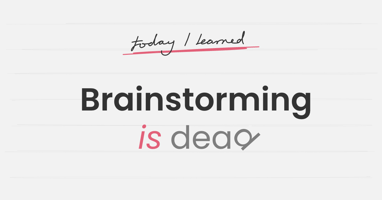At many large enterprises, the annual operating planning (AOP) process is entrenched and laborious. It's like a giant clock that needs to be wound once a year. Does the following sound familiar?
 |
The executive leadership team meets to review performance results, set the strategic direction, agree on the forecasts, determine goals and objectives, and finalize the strategic business plan for the coming year. |
 |
The executive leadership team hands the strategic business plan over to the directors who then translate that strategy into operational practices for their teams to achieve growth goals. |
 |
The year goes on. Distractions may (not) cause operational practices to stray from the initial plan. Sales may (not) hit targets. The organization may (not) continue ticking along towards the mission set forth months ago. |
 |
The end of the year arrives and the leadership team once again gathers to discuss progress — or perhaps lack thereof — against the past year's strategy, adjust the strategic direction, agree on the forecasts for the future, and outline another business plan for the coming year. |
Survival of the Fittest Fastest
In the era of the almighty consumer, globalization and digitization, the old AOP process is no longer a viable option for long-term survival. It's only a matter of time before a competitor or startup swoops in, buyer behaviors change (again), and/or a new technology causes mass disruption. Market leaders are being forced out of their dominant positions because of this disruption. In the 1920s, the average lifespan of an S&P company was 67 years. Today, it's only 15. 1
The best way to survive an unpredictable environment is to be capable of reacting swiftly to change. The traditional AOP process isn't enough anymore because strategy needs to:
- evolve throughout the year
- become part and parcel of how you operate on a daily basis
It's time to examine how you plan and how you operate and then revamp internal processes so you can respond with agility to market change and consumer demand. This will help you not only to survive, but to thrive in the ever-changing landscape.
Evergreen Strategy
 Replace the AOP process with quarterly or monthly strategic operating planning sessions and make adjustments based on market demands and forecasts at that time. This change will make corporate strategic direction a dynamic, living entity intimately linked to your organizational capabilities.
Replace the AOP process with quarterly or monthly strategic operating planning sessions and make adjustments based on market demands and forecasts at that time. This change will make corporate strategic direction a dynamic, living entity intimately linked to your organizational capabilities.
Strategic plans can no longer be static and hidden in a document or binder on a shelf; they must be living, breathing entities that evolve with the organization's forward direction and defined goals in mind. They need to be reevaluated on an ongoing basis; don't be afraid to ask the hard questions: Which programs and projects should continue being funded to drive performance? Which initiatives should be killed? What new investments could aid future growth?
Connecting the Enterprise
 The next step in transforming your enterprise is to connect teams cross-functionally. Disrupt your own legacy processes and operating models to enable collaboration and fact-based decisions based on a single set of shared, trusted data.
The next step in transforming your enterprise is to connect teams cross-functionally. Disrupt your own legacy processes and operating models to enable collaboration and fact-based decisions based on a single set of shared, trusted data.
How it is
Generally speaking, people are still operating in a disconnected way.
Functional groups work in their own environments and follow their own processes, armed with their own tool sets. Communication with others outside their functional unit is often chaotic, time consuming and inefficient.
This friction prevents organizations from moving forward rapidly. Successful innovation and execution of innovation strategy requires execution across all functio ns and coordinated decision-making based on common, reliable information.
How it could be
An interconnected enterprise brings together people, systems and information. It enjoys transparency and visibility to strategic goals, processes and outcomes. Teams operate together fluidly, often with shared toolsets, to increase efficiencies. It connects the right people to enable team members to contribute to the success of a program or project regardless of department, title or location.
The interconnected enterprise increases user engagement and builds morale by making contributor's work more meaningful and impactful. This is done by communicating the “why” for team members: individuals can see how their projects fit into the broader corporate strategy and how their contributions help support overall growth.
Enabling cross-functional communication and decision-making is no easy task. It requires a commitment to change and a renewed approach to day-to-day activities in the cross-functional teams.
Facts Drive Decisions
 Closely monitoring project and initiative progress against strategic and financial objectives gives decision-makers the visibility they need to make informed decision when choosing whether they want to start, continue, or stop investing in projects. The information these decisions are made with should come from the daily work and collaboration of team members.
Closely monitoring project and initiative progress against strategic and financial objectives gives decision-makers the visibility they need to make informed decision when choosing whether they want to start, continue, or stop investing in projects. The information these decisions are made with should come from the daily work and collaboration of team members.
At the end of the day, your leadership team wants to analyze reliable facts and make informed decisions. If a project is going to fail, it's best if it fails fast. Cut your losses. Reassess. Prioritize. Then make decisions as to what your next set of investments will be.
Tick-Tock: You Don't Have Time to Lose
 In theory, this seems plausible. But in practice, it can be overwhelming. As the enterprise moves to faster review and planning cycles, the need for a single, centralized and interconnected dataset that is visible to all key stakeholders becomes increasingly clear. Transformation requires not only changing operating models and how teams perform their daily work, but it also requires a platform for the corresponding knowledge management and cross-functional collaboration. The right technology is paramount for making the smartest decisions to remain relevant in a turbulent marketplace and successfully accomplish your goals.
In theory, this seems plausible. But in practice, it can be overwhelming. As the enterprise moves to faster review and planning cycles, the need for a single, centralized and interconnected dataset that is visible to all key stakeholders becomes increasingly clear. Transformation requires not only changing operating models and how teams perform their daily work, but it also requires a platform for the corresponding knowledge management and cross-functional collaboration. The right technology is paramount for making the smartest decisions to remain relevant in a turbulent marketplace and successfully accomplish your goals.
Don't let your outdated AOP process and operating methodologies slow you down. You have too much to lose. The time for transformation is now.
Related Resources:
- On-Demand Webinar: Enterprise Innovation in the Digital Era
- Ebook: How to Select an Enterprise Innovation Management System
- Resource Library: Strategy Execution
- Resource Library: Digitize Innovation
- Whitepaper: Aligning Product Portfolios with Strategic Plans
Interested in driving change? We're happy to help, you can contact us at Sopheon.
Interested in finding the right tool? Learn more about Accolade ®, which helps organizations communicate strategy down and across the organization, manage portfolios, measure outcomes, collaborate cross-functionally, and then communicate information back up the chain of command so leaders can make fact-based decisions.
Sources
1 Professor Richard Foster, Yale School of Management





